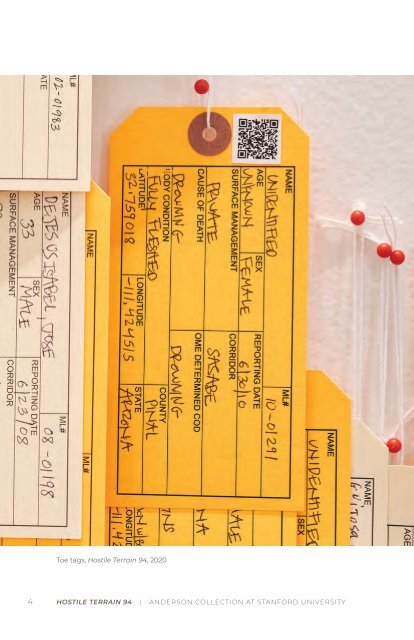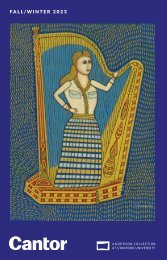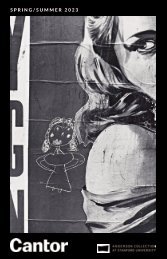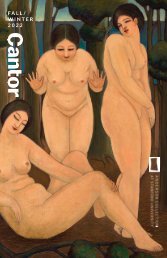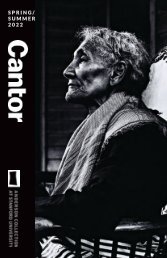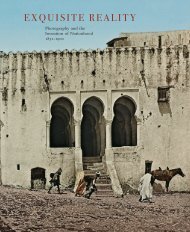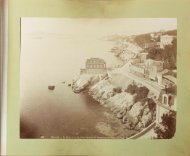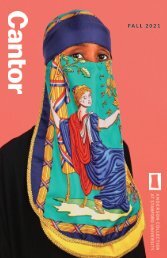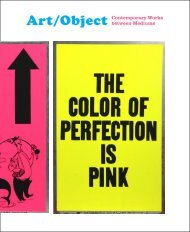Hostile Terrain 94
Hostile Terrain 94 is a participatory art project sponsored and organized by the Undocumented Migration Project. The installation is composed of more than 3,200 hand-written toe tags filled out by the community, each representing a migrant who has died trying to cross the US-Mexico border at the Sonoran Desert of Arizona between the mid-1990s and 2019. The exhibition is installed on the first floor and the accompanying publication was written by both graduate and undergraduate students at Stanford University.
Hostile Terrain 94 is a participatory art project sponsored and organized by the Undocumented Migration Project. The installation is composed of more than 3,200 hand-written toe tags filled out by the community, each representing a migrant who has died trying to cross the US-Mexico border at the Sonoran Desert of Arizona between the mid-1990s and 2019. The exhibition is installed on the first floor and the accompanying publication was written by both graduate and undergraduate students at Stanford University.
You also want an ePaper? Increase the reach of your titles
YUMPU automatically turns print PDFs into web optimized ePapers that Google loves.
BRINGING HOSTILE TERRAIN <strong>94</strong> TO THE<br />
STANFORD COMMUNITY<br />
KOJI LAU-OZAWA<br />
When I first saw the <strong>Hostile</strong> <strong>Terrain</strong> <strong>94</strong> installation in a photograph, I did<br />
not understand what I was looking at. As one of my advisors outlined<br />
the meaning behind the mass of orange and tan tags, it dawned on me<br />
that each of those tags represented a life lost as the result of US border<br />
policies. Each signified a life that was filled with triumphs and sorrows,<br />
passions and fears, hopes and disappointments. I was overwhelmed by<br />
the immensity of the loss.<br />
<strong>Hostile</strong> <strong>Terrain</strong> <strong>94</strong> is a production of the Undocumented Migration Project<br />
(UMP). Led by scholar Jason De León, the UMP is an anthropological<br />
study of clandestine movement between Latin America and the<br />
United States. Drawing on a range of disciplines, from archaeology and<br />
forensic sciences to ethnography and visual anthropology, the UMP<br />
strives not only to understand the processes of migration and the lives<br />
of migrants but also to educate the public through multiple mediums.<br />
Earlier exhibitions by the UMP—such as State of Exception / Estado<br />
de Excepción, which featured hundreds of backpacks and ephemera<br />
left behind by migrants crossing the US-Mexico border—have been<br />
presented across the United States. While powerful, such traveling<br />
exhibitions are cost prohibitive for many institutions to host, limiting the<br />
public’s exposure to these visual statements.<br />
In response to this challenge, the UMP team developed <strong>Hostile</strong> <strong>Terrain</strong><br />
<strong>94</strong> as a multimedia exhibit that relies on community participation<br />
for completion and is much more affordable to host. It consists of<br />
more than 3,200 toe tags hung across a wall map of the US-Mexico<br />
border; each tag is pinned to the map according to coordinates for<br />
Toe tags, <strong>Hostile</strong> <strong>Terrain</strong> <strong>94</strong>, 2020<br />
4 HOSTILE TERRAIN <strong>94</strong> | ANDERSON COLLECTION AT STANFORD UNIVERSITY HOSTILE TERRAIN <strong>94</strong> | ANDERSON COLLECTION AT STANFORD UNIVERSITY 5


